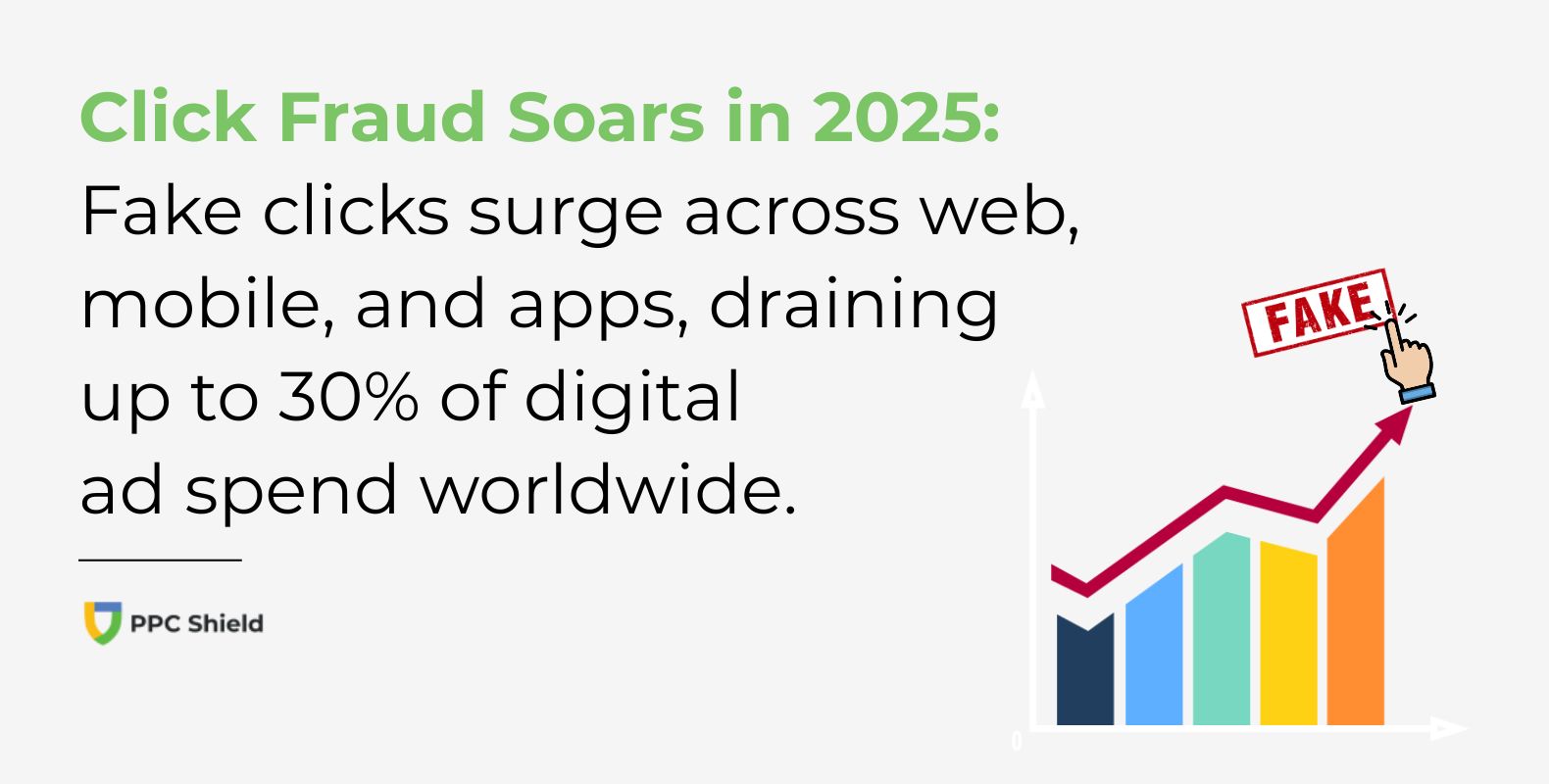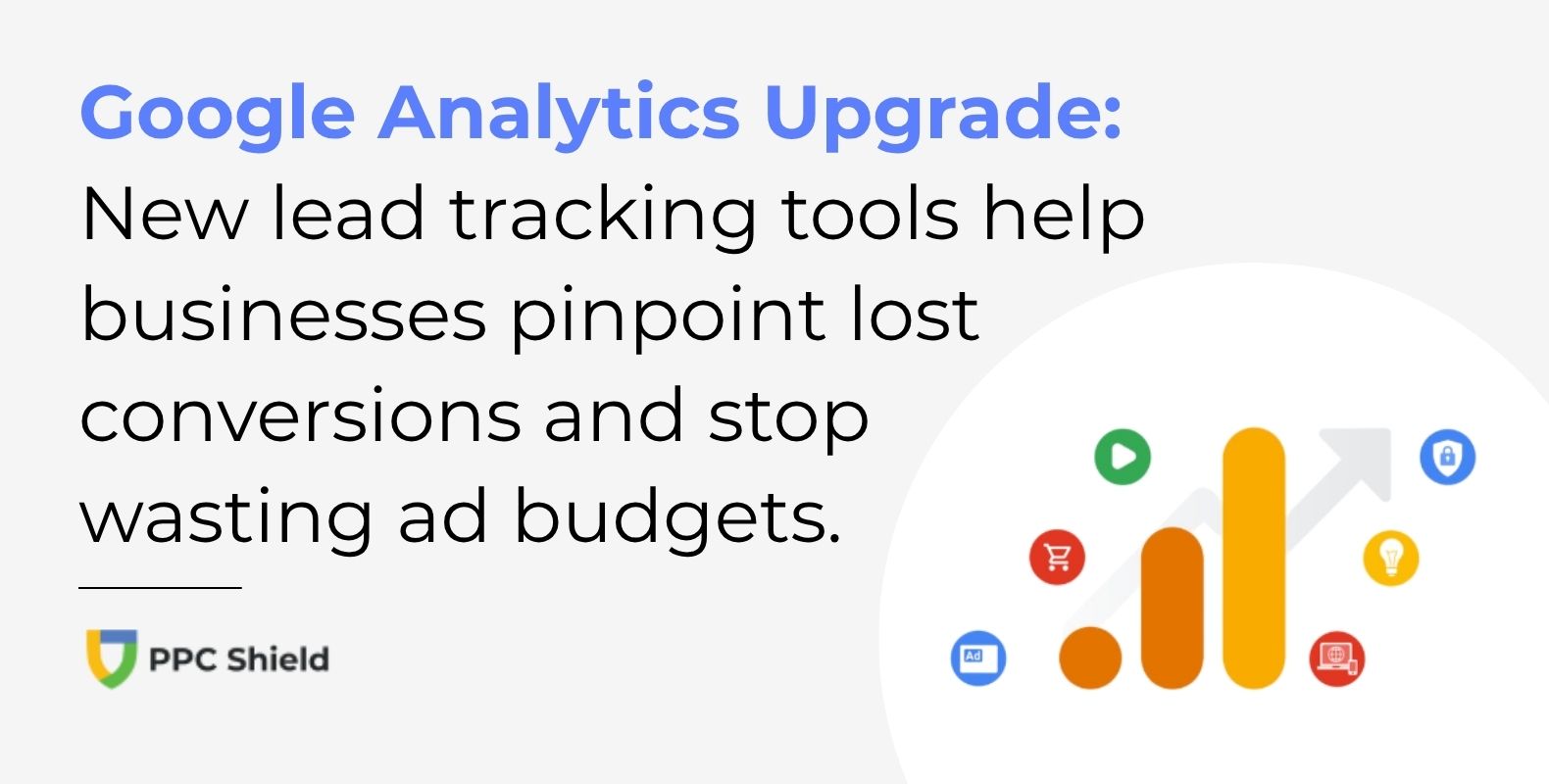PPC Click Fraud in 2025: a Growing Threat Draining Budgets

Rising Fraud in a Booming Ad Market
Digital advertising is booming. Global ad spend is forecast to exceed US $1.16 trillion in 2025, and advertisers are pumping money into paid-search and social campaigns. Yet a rising share of that investment is stolen by click fraud and other forms of invalid traffic (IVT).
Click fraud refers to fake or malicious clicks generated by bots, click farms or competitors with no intent to purchase.
These fraudulent clicks distort metrics such as cost-per-click (CPC) and click-through-rate (CTR), exhaust budgets prematurely and skew optimisation algorithms. Recent studies reveal that the problem is accelerating in 2025 and affects every industry and device.
How big is the problem?
Fraud0’s “Unmasking the Shadows 2025” report analysed 1.2 billion onsite sessions and 10.78 billion ad impressions from October-December 2024. It found that 21.3 % of all traffic was invalid and that bots account for 14.9 % of ad impressions (8.7 % confirmed bots and 6.2 % suspected). Fraud0 also reports that 9.75 % of conversions are invalid, with returning bots responsible for 17.67 % of bot sessions. These bots mimic human behaviour, rotate IP addresses and exploit target-CPA algorithms, making them difficult to detect.
ClickPatrol’s PPC fraud study notes that one in six PPC clicks is fraudulent, costing advertisers over US $84 billion per year. Industries with high CPCs such as legal, finance and real estate can see up to 30 % of traffic coming from fraudulent clicks. Spider AF’s 2025 white paper measured an average ad-fraud rate of 5.1 % in 2024, translating to around US $37.7 billion in annual losses. TrafficGuard’s industry statistics summarise that 20–30 % of digital ad spend may be affected by fraud; they estimate that for every US $3 invested in marketing, US $1 is lost to fraud. The Association of National Advertisers’ Bot Baseline Report puts the average invalid-traffic rate at 10 % of all digital advertising.
Fraud0 highlights that invalid impressions in programmatic ads average 21.23 %, but they differ dramatically by device – 15.24 % on the web versus 41.89 % in mobile apps. Pixalate’s Q1 2025 benchmarks corroborate the pattern: in North America the global IVT rate on web traffic was 18 %, but 31 % of mobile-app traffic was invalid. Desktop and mobile-web click-fraud rates across the U.S. and Canada were 20–21 %, whereas mobile-app IVT rates reached 23–26 %. These figures emphasise that mobile advertising is particularly vulnerable to click fraud.
Industries under attack
Click fraud is not evenly distributed. ClickPatrol’s cost-analysis notes that financial and legal services face click-fraud rates between 14 % and 24 % because of the high value of their keywords.
E-commerce brands see fraud spikes during peak shopping seasons, with rates around 15%
In the mobile-apps and gaming sector, estimates range from 20% to 40%
Affiliate marketing suffers about 17 % fraudulent traffic
Local home services (pest control, locksmiths, plumbers) can experience staggering fraud rates of 50–65%
Even retail and fashion brands report fraud around 14 %
The disparity stems from different incentives. High-CPC industries are lucrative targets for bot operators and competitors, while app-install fraud thrives in mobile-app ecosystems where app-ranking algorithms are easily manipulated. Fraud0’s data also show geographic variations – Asia-Pacific is expected to be the hardest-hit region. Small businesses are especially vulnerable; TrafficGuard reports that click fraud can consume 30 % of a small company’s advertising budget.
Hidden costs and why prevention matters
Beyond direct budget losses, click fraud causes hidden damage. It skews analytics and bidding algorithms, leading marketers to optimise towards junk traffic and pay higher CPCs. Fraud notes that invalid users view only 1.2 pages and stay about 26 seconds, compared with 181 seconds for all users, which distorts engagement metrics.
Studies also show that conversion rates from valid clicks are roughly twice those from invalid clicks. Left unchecked, fraud reduces ROI, lowers ad quality scores and can even tarnish brand reputation.
Fighting back: protecting your PPC budget
Advertisers need multi-layered defences to combat click fraud. IP exclusions, geo-targeting and frequency caps can curb obvious bots, but they’re insufficient against sophisticated fraud. Real-time detection platforms that analyse behavioural signals and block suspicious devices are essential.
Our company, PPCShield.io, uses machine-learning and device fingerprinting to identify bots and click farms before they drain your budget. By integrating our solution into your ad platforms, you can monitor traffic quality across devices, block high-risk IPs automatically and restore confidence in your marketing data. In an environment where 21 % to 31 % of clicks may be invalid, proactive protection is not optional – it is critical.





